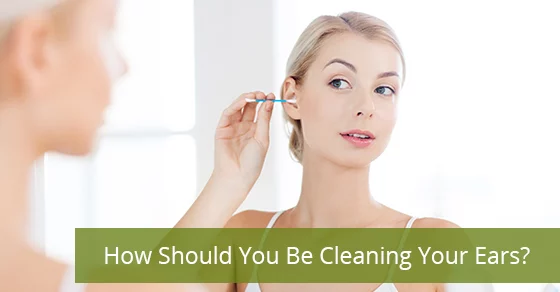How Should You Be Cleaning Your Ears?
Posted by Living Sounds

Earwax isn’t dirt or residue that needs to be removed from our bodies. Our ears produce it as a defence mechanism. It lubricates and protects the ear from infections. Furthermore, it’s supposed to leave the body on its own slowly and naturally. Everyday movements like chewing and moving the jaw push earwax from the canal to the outer ear where it collects and flakes off. Because of this, you generally won’t notice your ear wax leaving your body.
When to Remove Ear Wax
Ear wax removal only becomes necessary when it builds up along with debris in the ear canal. This can cause blockages that prevent it from naturally flaking off. Often earwax accumulation can affect your hearing. Many people who complain about muffled sounds or decreased hearing quality may be dealing with earwax build-up. When safely removed, patients feel instant relief, and their hearing is quickly restored. However, ear wax removal shouldn’t be attempted lightly, too often, or on your own.
Frequent cleaning of the ears can cause them to become dry and itchy. Worse, using a foreign object — like a cotton swab — won’t remove built-up earwax. Instead, it just pushes ear wax back inside, causing further build-up, rather than safe removal. Over time, it causes blockages that affect hearing. When this happens, it’s best to book an ear wax removal by a hearing healthcare professional.
How is Ear Wax Removed?
When booking an ear wax removal, you can expect your hearing healthcare provider to use professional cleaning instruments, such as an irrigation kit, to safely remove built-up ear wax and debris. This is the best and safest way to remove ear wax and clear blockages that cause muffled hearing. Your hearing healthcare provider will use a water or saline solution with a suction device and/or a curet. These instruments allow them to locate earwax build-up and evacuate it from the ear canal. To start the procedure, your hearing healthcare provider will warm up the solution to body temperature to avoid common side effects like dizziness. They will then use a syringe to deliver the solution to the ear canal. You should expect to keep your head tilted to one side. This ensures that the solution sits in the ear before they begin suctioning.
How to Safely Clean Your Ears at Home
It may not be safe to jam a cotton swab into your ears to remove ear wax, but you can still keep your ears clean at home. In order to protect the delicate instruments inside your ear, limit cleaning to the outer ears where earwax and debris may collect. Use a cloth dipped in lukewarm water and wipe down the outer areas of the ear. Doing this removes ear wax and debris in the process of flaking off, allowing them to fall off more easily. Alternatively, you can also use mineral or baby oil, glycerin, or ear drop solutions to help loosen the build-up once it passes the ear canal and sits on the outer ear. And remember to always seek professional earwax removal if you experience symptoms of minor hearing loss related to earwax build-up. Whatever you do, don’t attempt earwax removal using foreign objects like cotton swabs, tweezers or bobby pins.
Exercise Caution During Ear Wax Removal
Keep in mind that your hearing healthcare provider will first need to assess your symptoms. They will need to determine whether they can safely irrigate the ear. A thorough hearing assessment will reveal your complete medical history. If you have been previously diagnosed with holes in your eardrum, diabetes, eczema, and other skin conditions in or close to the ears, a weakened immune system, and having a tube in your eardrum, you may not be a good candidate for irrigation. Your hearing healthcare provider will work with you to determine other methods for safe ear wax removal.
Remember that most people don’t need frequent earwax removal. It is important to maintain a healthy amount of earwax for lubrication and antibacterial protection. We recommend earwax removal only ever so often when buildup causes minor hearing loss or irritation. Earwax should be removed to relieve intense pressure in the ears, which can often cause sore ears. Otherwise, it’s best to allow ear wax to flake off naturally.
Common Ear Cleaning Mistakes
Cotton swabs are handy for many situations, but they have no place inside our ears. It can be tempting to clean your ears at home and remove excess earwax. However, doing so could cause damage to your hearing. Aside from cotton swabs, make sure to avoid earwax candles. Earwax candles come with a high risk of severe burns and worse, further blockage of candle wax in the ears. They can cause bleeding, eardrum puncture, and holes in the membranes of the ear canal and middle ear. The high risk of injuries and impact on your hearing is definitely not worth it.
To learn more about cleaning your ears safely and booking an ear wax removal, find a Living Sounds hearing clinic near you or contact us here.

